Build an Infinitely Customizable Gaming Table With These 3D Printer Plans
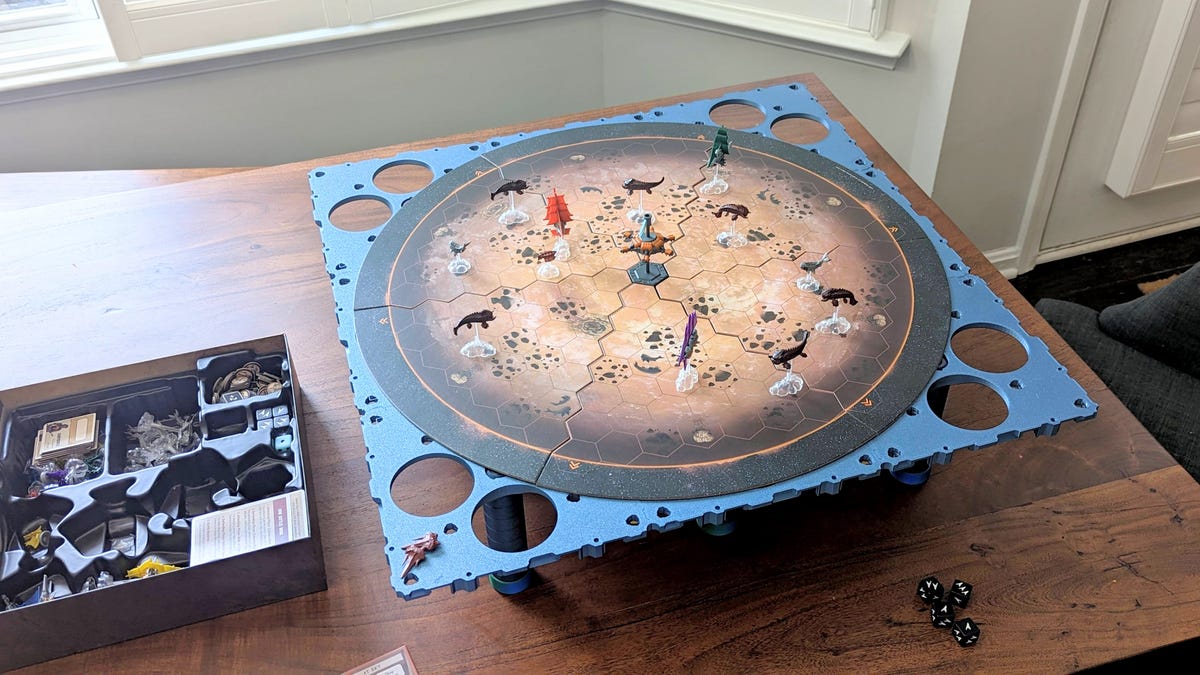
James Bricknell/CNET
Fans of 3D printing often tend to be fans of things like tabletop games and Dungeons & Dragons. When I find something that combines those admittedly nerdy hobbies, I tend to get excited. That’s what drew me to a Kickstarter project called the StageTop 3D-printable gaming table from Gut Shot Games.
The StageTop is a fully 3D-printable modular gaming desktop you can build at home. The way it works is that anyone with a 3D printer can print all of the pieces needed for the gaming table directly from home with just one 3D printer (and a lot of filament). Gamers can 3D print as many of the modular pieces as they need, including tiles, connectors, bumpers and legs, then build a gaming surface of almost any size and shape. ?
Backing the project at its standard level (currently $48) unlocks all the digital files needed to build a gaming table at any custom size. Raising more than $300,000 through Kickstarter so far, the project has added “stretch goals,” including modular dice towers and card holders. I’ve played around with some of those files and I can tell you they’re really good.
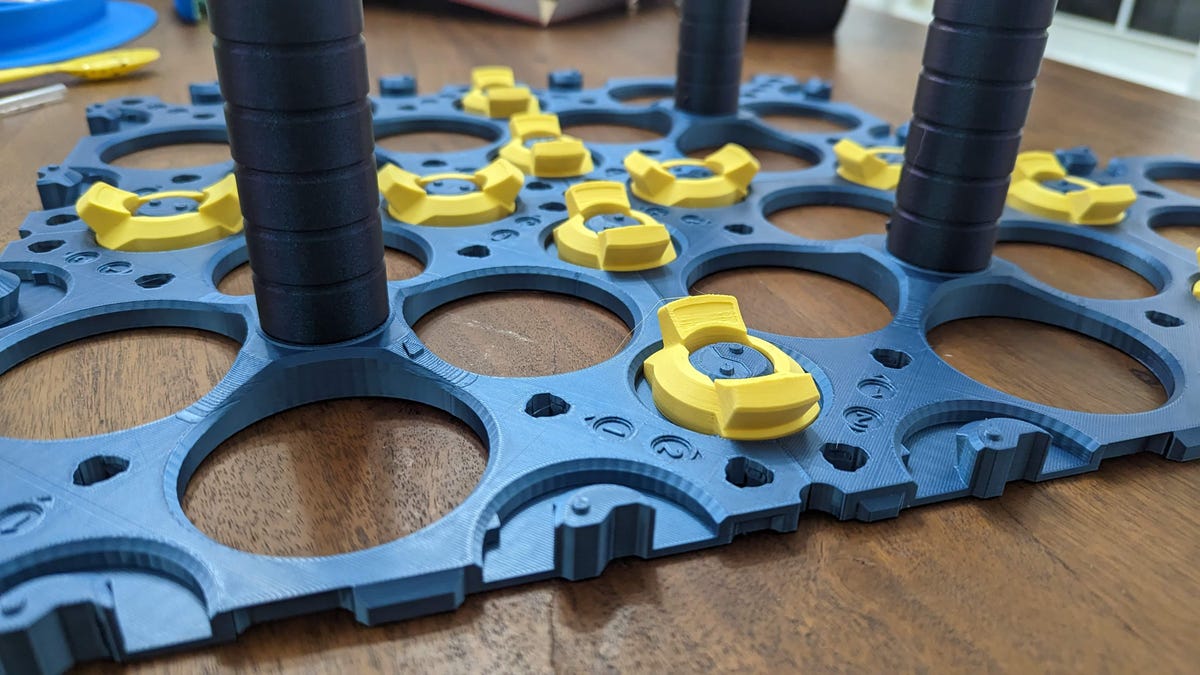 James Bricknell/CNET
James Bricknell/CNET
The main table consists of 8-inch tiles that fit perfectly on most standard 3D printers. I’ve printed them on four different machines and as long as your print area is around 220x220mm you’ll be good to go. The design is excellent and each tile slots neatly together, locked in place with simple lock nuts. None of the models require support, so they’re quick and easy to print.?
I printed 16 of the lock nuts on the Snapmaker J1 using that printer’s dual nozzles, and they took 3 hours, 30 minutes to print, but your mileage may vary. You also don’t need to print the pieces on a $1,300 machine as I’ve done. I printed the plates on different printers, including the budget-friendly Neptune 3 from Elegoo, and saw very little difference in quality. The expensive machines are faster, no doubt, but if you have a budget printer, you’ll be just fine.?
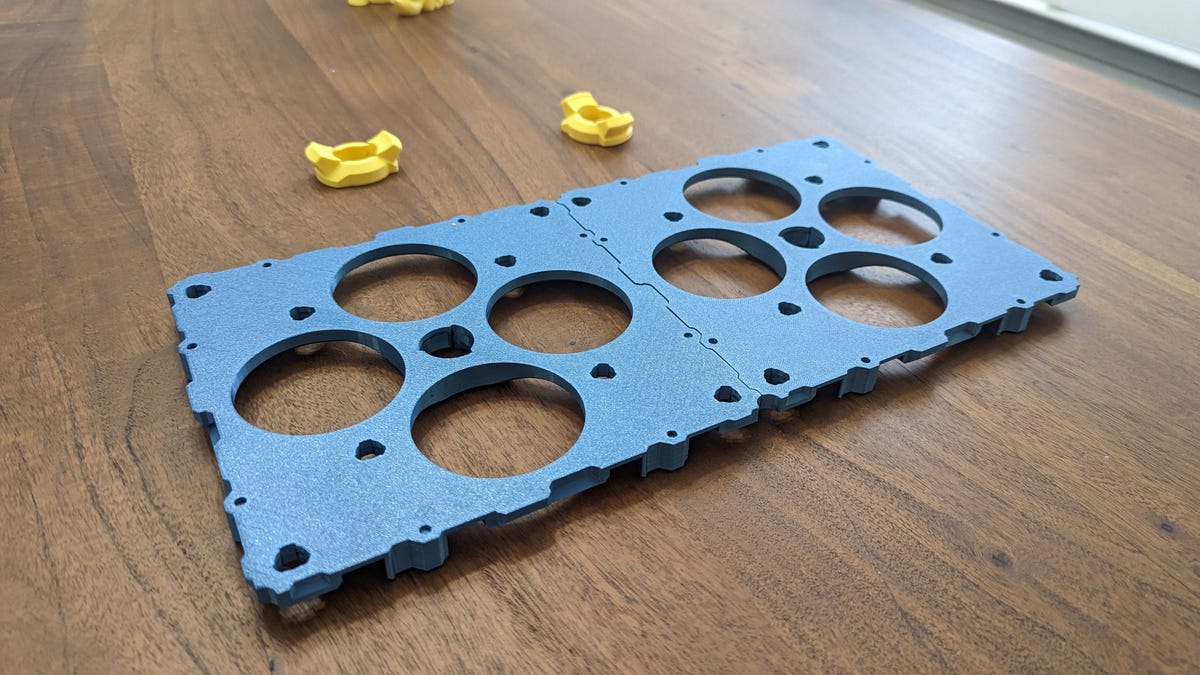
One panel was printed on a high-end 3D printer, the other on a budget model. Can you tell the difference??
James Bricknell/CNET
I asked Gut Shot founder James Campbell where the idea for this project came from. “During the pandemic, I had to set up a workstation on the table I typically use for gaming so I could work from home,” he told me via email. “While I could and did still play games on other tables in our home, I couldn’t leave a game up for long and it got to be a pain.”
His team has been working on this design for about 18 months and you can see how much thought has gone into it. This has been designed with 3D printing in mind, so issues like overhangs or hard right angles have been eliminated, making it easy to print on any printer. Even the holes in the tiles are there to reduce filament usage. Each tile I printed weighed just 100 grams, so I managed to get 10 out of a single 1-kilogram roll of filament.
To give you an idea of size, 10 tiles is enough to build a 2-foot-by-2-foot gaming surface — with one tile left over — perfect for most board games including Windward, my favorite game this month. My goal is to have a surface much larger than that — I want it to cover my pool table using 55 tiles. By my calculations, I’ll need about six rolls of filament for all of the pieces. Even using the best 3D printing filament, that’s only around $210 in materials cost; a fraction of the cost of a prebuilt gaming table, the cheapest of which is around $950 at this size.?
You don’t need to have fancy filament for most of it either. Build series PLA from MatterHackers is perfect for this and only costs $110 for six 1kg rolls. You only want nicer filament for the top parts, not these hidden pieces. Even adding in the cost of a 3D printer if you don’t have one already, the price is still good.
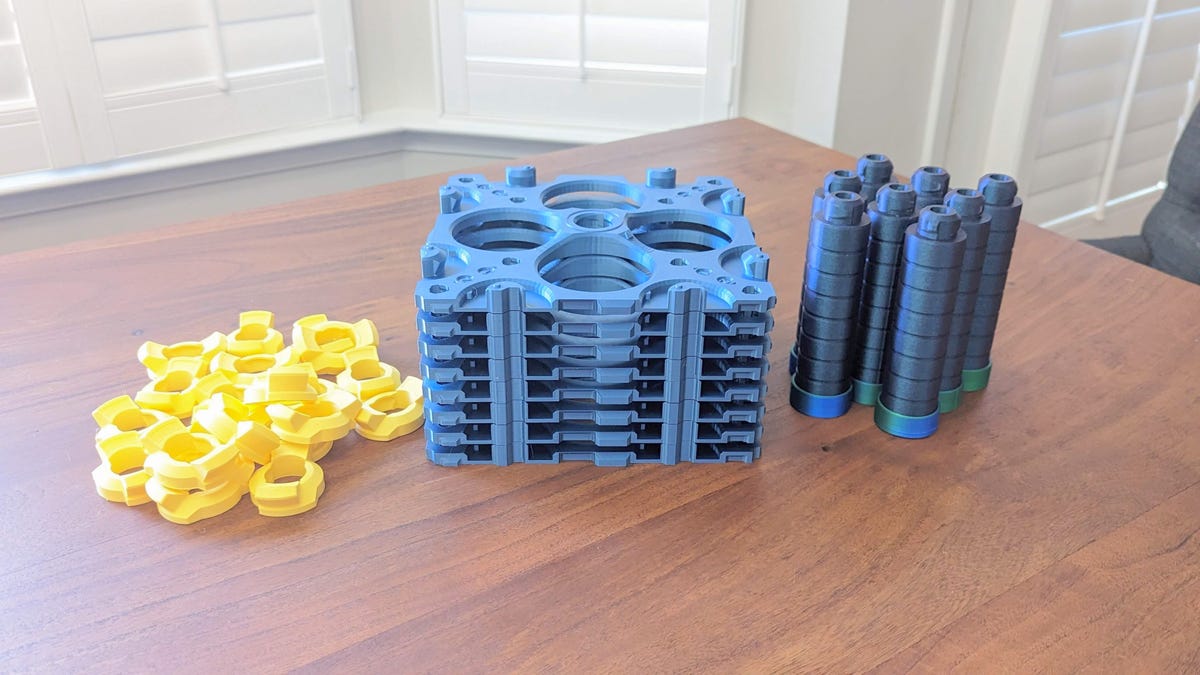 James Bricknell/CNET
James Bricknell/CNET
One of the promises of 3D printing at home is the ability to build customized versions of various objects and bypass the supply chain. The StageTop is exactly that, a fully customizable surface that’s printable at home, on demand. No waiting for delivery, no worrying about parts breaking — you can just reprint any piece you need. Gaming just the way you want it.
When I asked Campbell about the options for fully customizing all the parts, by altering the model files, he was naturally cautious. “Not long after the campaign started, we heard feedback from the community that they wanted to make their own play surface designs and accessory tiles. So we added an unplanned Stretch Goal of remixable Play Tiles. This will allow the community to make their own Play Tiles to go along with their favorite games.”
This “remixable Play Tile” will be the only model with a license to allow editing, but with that, modelers will be able to create custom parts that can sit on a StageTop. It looks like Gut Shot Games will keep the rails, legs and locks proprietary right now.
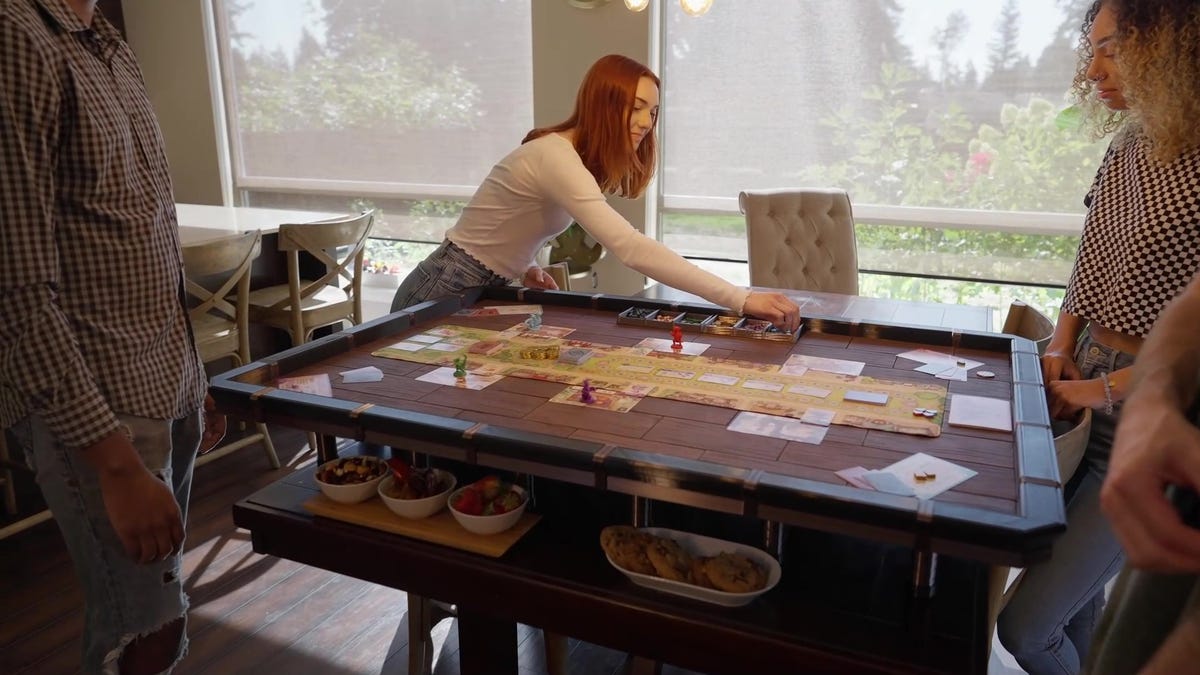 Gut Shot Games
Gut Shot Games
I’ve followed this project almost from the beginning and found that it lived up to my high expectations. In addition to the basic $48 version, which includes all the 3D models for personal use, there’s a $96 version that includes a two-year license to print and sell the table commercially if you have, for example, an Etsy store or table at a gaming convention. You’ll be able to resubscribe to the commercial license after two years as well.
More on 3D printing
- Best 3D Printer for 2023
- Best Budget 3D Printer
- What Is 3D Printing?
- Best 3D Printing Filament
Before contributing to any crowdfunding campaign, read the crowdfunding site’s policies — in this case, Kickstarter — to find out your rights (and refund policies, or the lack thereof) before and after a campaign ends. This particular campaign is essentially using Kickstarter as a store to sell digital files that already exist, so your risk is much lower than with a campaign that promises to ship you a physical object.